I’m still celebrating Pride & Prejudice’s 200th anniversary. Today, I’m enjoying a retrospective of Darcy’s first proposal to Elizabeth. It’s a classic within a classic. So, I thought we should take a look at the various ways it has been adapted
“In vain have I struggled. It will not do. My feelings will not be repressed. You must allow me to tell you how ardently I admire and love you.”
Elizabeth’s astonishment was beyond expression. She stared, coloured, doubted, and was silent. This he considered sufficient encouragement; and the avowal of all that he felt, and had long felt for her, immediately followed. He spoke well; but there were feelings besides those of the heart to be detailed, and he was not more eloquent on the subject of tenderness than of pride. His sense of her inferiority — of its being a degradation — of the family obstacles which judgment had always opposed to inclination, were dwelt on with a warmth which seemed due to the consequence he was wounding, but was very unlikely to recommend his suit.
Read the rest of the proposal here.
This is possibly the most heartfelt and insulting proposal in English literature. In adaptations, there is so much to be done with it. Shall we see what has been done?
My apologies for not embedding the videos. I can’t seem to size them correctly at this moment.
1940: Greer Garson & Laurence Olivier
Like much of this adaptation, Darcy’s first proposal takes some liberties with the text, but it does manage to get the basics. It’s one of the most faithful scenes in an unfaithful adaptation. But who doesn’t like Sir Laurence?
1980:Elizabeth Garvie & David Rintoul
Yes, I know many love this adaptation. I’m afraid I cannot share that affection. The dialog is fairly faithful, but really. There is no emotion in this scene. I’ve come to expect that from David Rintoul, who plays Darcy as though he had been assimilated by the Borg. And, I’m afraid Elizabeth Garvie gives as good as she gets here.
1995: Jennifer Ehle & Colin Firth
Now, this one… This one is, in my opinion, very nearly perfect. It occurs in the right setting and captures the feeling of the dialog, the emotion of both parties without going overboard (see below). You can actually see Mr. Darcy struggle against his inclination and Elizabeth’s realization of exactly what’s going on. And you can’t go very far wrong with Colin Firth. Now, that’s Mr. Darcy.
2005: Keira Knightley & Matthew MacFadyen
Here we have Pride & Prejudice by Charlotte Bronte (or possibly Emily). I cannot indict this scene for lack of emotion. Indeed, there is a surfeit of emotion as evinced by the thunder in the background. I’m sorry, but this proposal is sufficiently dramatic without the atmospherics. And what is happening at the end. Is she thinking about kissing him after telling him off? That’s one way of writing this scene. I could see it happening and have in several romances but not, alas, in Pride & Prejudice.
I’m sure you all have a favorite adaptation. And I won’t object too strongly if it doesn’t agree with mine. What do you think of these proposal scenes or do you have another that you prefer?

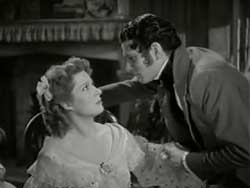



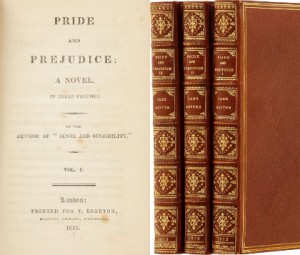 Jane Austen’s “own darling Child” was, of course, the published Copy of Pride & Prejudice. This is month is the 200th anniversary of its publication and a big month for Janeites.
Jane Austen’s “own darling Child” was, of course, the published Copy of Pride & Prejudice. This is month is the 200th anniversary of its publication and a big month for Janeites.
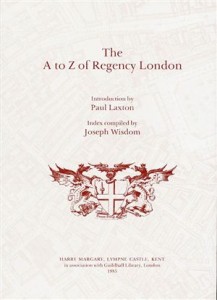 One of the challenges of writing a Regency Romance is geography. I know. Not what you thought, is it? Well, it’s one of my challenges. I want my characters to be taking the correct streets, catching the mail coach at the right inn, taking a walk along the right path in the right park, running off the road into the right ditch.
One of the challenges of writing a Regency Romance is geography. I know. Not what you thought, is it? Well, it’s one of my challenges. I want my characters to be taking the correct streets, catching the mail coach at the right inn, taking a walk along the right path in the right park, running off the road into the right ditch.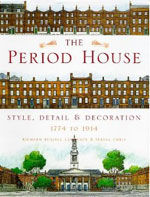 It’s not all geography, though. If you have a burning need to be able to talk, in detail, about the design of your hero’s townhouse, you might want to take a peek at
It’s not all geography, though. If you have a burning need to be able to talk, in detail, about the design of your hero’s townhouse, you might want to take a peek at  Just a couple of more. Your hero, undoubtedly needs a place to escape from his meddling mama. You’ll need to send him to his club. Also, you’ll need to know what club to send him to. Try The
Just a couple of more. Your hero, undoubtedly needs a place to escape from his meddling mama. You’ll need to send him to his club. Also, you’ll need to know what club to send him to. Try The  Let me leave you with one last, excellent, book for a general understanding of your era in London. Dan Cruickshank and Neil Burton’s
Let me leave you with one last, excellent, book for a general understanding of your era in London. Dan Cruickshank and Neil Burton’s 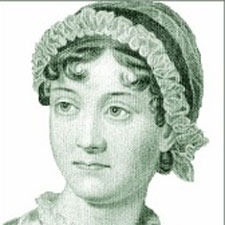 As an adjunct blogger, I missed Risky Regencies’ Jane Austen week, but I cannot let another week go by without my own acknowledgement of what Jane Austen has meant in my life.
As an adjunct blogger, I missed Risky Regencies’ Jane Austen week, but I cannot let another week go by without my own acknowledgement of what Jane Austen has meant in my life. Not long after that, I began developing
Not long after that, I began developing 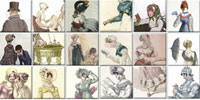 Also in our early days, we were a big fan fiction hub. Our Bits of Ivory board drew everything from the initial version of Pamela Aidan’s best-selling Fitzwilliam Darcy, Gentleman trilogy to stories like “Pemberley High.” Eventually, we decided that fan fiction was not our focus and it made its way to other sites such as
Also in our early days, we were a big fan fiction hub. Our Bits of Ivory board drew everything from the initial version of Pamela Aidan’s best-selling Fitzwilliam Darcy, Gentleman trilogy to stories like “Pemberley High.” Eventually, we decided that fan fiction was not our focus and it made its way to other sites such as